Like a smart suit, a shopfront can create the right first impression, and that is certainly what B. Corcoran's does. This family-owned menswear emporium has stood smartly at the end of Wexford’s North Main Street for almost seventy years.
In the 1950s, its young owner, Brendan Corcoran, wanted his shop to reflect the modern fashion of sleek lines and smooth façades. This striking Wexford icon has seen shopping trends come and go over the past seventy years or so, along with some notable customers, but its façade remains largely unchanged.
In 1955, at the grand old age of twenty-three, Corcoran took out a fifty-year lease, for £3 a week (bought outright in the 2000s), on the ground floor of No.73 North Main Street at the edge of Wexford town near the Bull Ring market. Previously, it had been Whelan’s fashion shop owned by James J. Whelan, selling upmarket ladies and wedding clothes. This terraced, two-storey commercial building of rectangular plan was built in 1932 with the upper floor rented out as accommodation. Brendan lived over the shop for a time with his wife when they were first married.
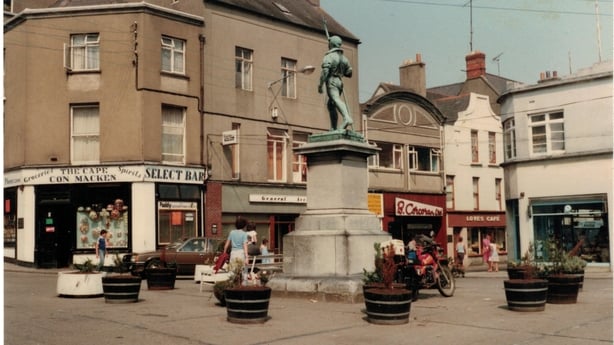
(Pic: Kevin Freeney)
Brendan's father, Pat Corcoran, was known the length and breadth of the county not just for his small chain of bookmakers, P. Corcoran’s, but also for being a player on the first ever Wexford team (Castlebridge Club) to win an All-Ireland Hurling Final in 1910. Pat died early in 1959 and his son John took over the bookmaking business. In 1988, he merged P. Corcoran’s with Stewart Kenny and David Power to created Paddy Powers bookmakers.
For the shopfront, Brendan Corcoran employed the shopfitters A.H. Bex Ltd with an address at 18 - 21 South King Street, Dublin. A.H. Bex were also the shopfitters for No.100 -101 Grafton Street (Munster & Leinster Bank) in 1932 designed by McDonnell & Dixon Architects and Funges of Gorey (1949). Corcoran’s was given contemporary teak fittings and signage for its opening in 1956.
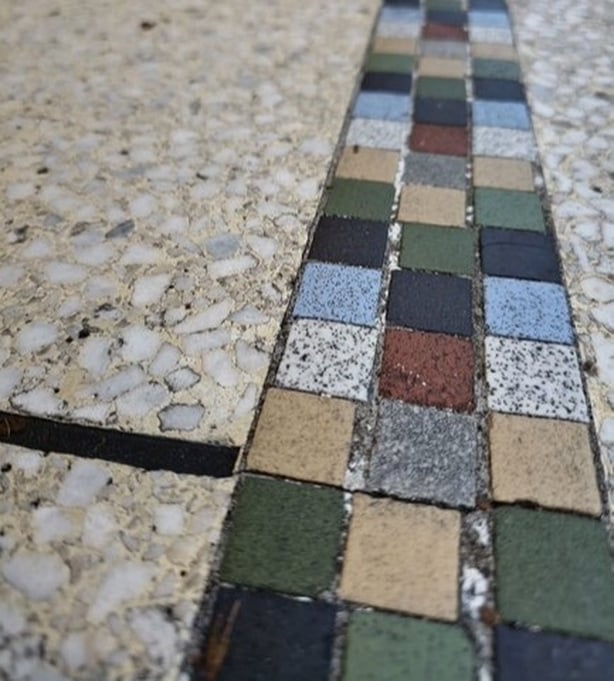
Large shop windows heralded a new era of retail marketing, allowing the shopper to see through to the interior. The geometric frontage is striking in its design. ’B. Corcoran Ltd.’ appears in dramatic script font on a tapering pennant over painted, timber panelled fascia. Simple pilasters and sills frame square-headed display windows. At the base, a mosaic stall-riser grounds the shopfront and protects against splashback. On the floor, decorative terrazzo tiling with a mosaic trim is practical and elegant. The only change to this front happened thirty years ago, when a kiosk on the left side in which the owner used to sit was knocked through to enlarge the window display.
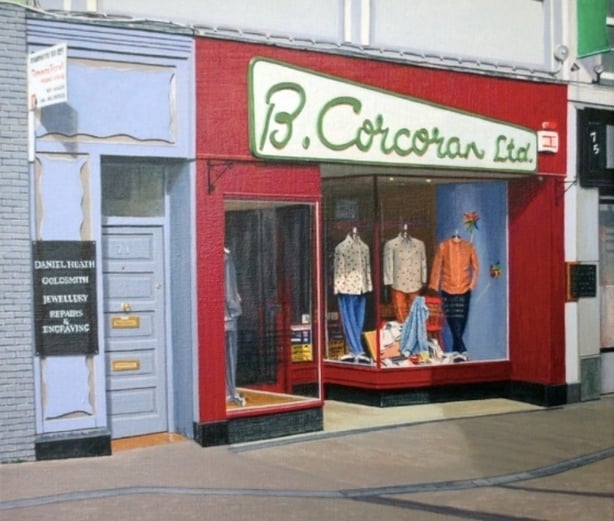
(Image courtesy of Taylor Galleries)
This geometry can still be dramatic. Both display windows are deep. On the left, the window pushes almost to the edge of the building’s footprint and follows its axes. The right-hand window is recessed and angled toward the entrance and it is cantilevered, projected beyond its base to create a sense of lightness and space. Recessed lighting in the porch roof and display windows offset the glare from sunlight and provide night exposure. The entrance door is glazed along with overlight and sidelight to compensate for the deep porch.
Corcoran’s entrance has one of the most well-considered door handles of any retail shop in the country. It is Art Deco in style, with a brass footplate and bold double push bars, also in brass, at the natural height of an outreached hand. Again, it is both practical and elegant in its ornamental simplicity.
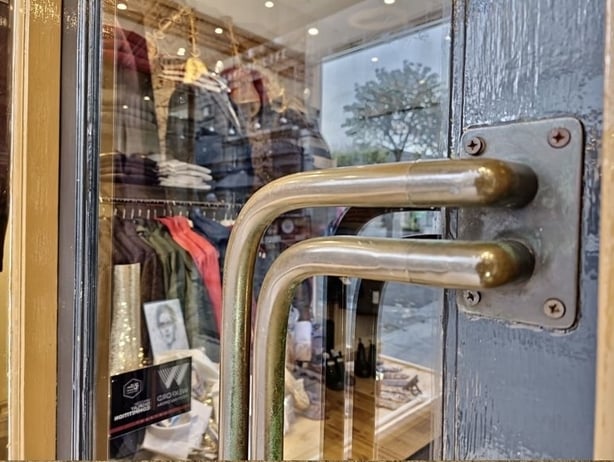
Inside, original wooden counters are still in place but otherwise Corcoran’s has moved with the changes in retail experience and demand. "Everything was in drawers back then," Brendan Corcoran explains, "not out for the customer like it is today. You wouldn’t do business if it didn’t change".
Brendan is now retired, having passed on the shop to his daughter Maeve and her family. Speaking of the need for more versatile materials, Brendan commented "If I was doing a shop today again, I would do it in timber, softer, change the colour whenever you want".
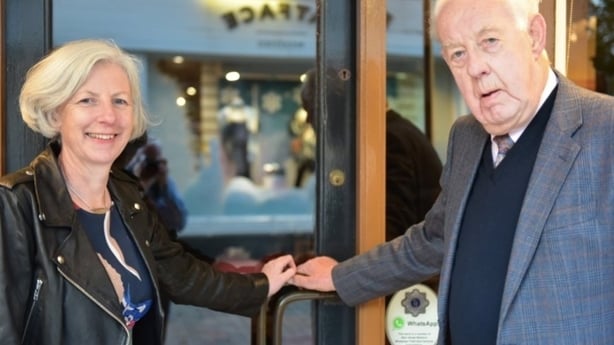
Maeve Glover (L) and Brendan Corcoran (R)
Brendan liked to provide something different and travelled to London and Germany to offer clothes from further afield to the gentlemen of Wexford. This attracted some unexpected shoppers. "Not long after I opened", he says, "a gentleman in a Crombie overcoat came in looking for handkerchiefs". After the customer left with his purchase, Brendan exclaimed to his sales assistant "I’ve been codded here", seeing the cheque signed simply ‘Duke of Wellington’. But it was no trick. Valerian Wellesley, 8th Duke of Wellington, had popped in for some hankies. Wellington later returned with his friend Sir Alfred Beit, former owner of Russborough House in Wicklow, art collector, patron, former Director of the Wexford Opera Festival and donor of seventeen masterpieces to the National Gallery of Ireland in 1987.
Shopfronts are one of the most important elements in determining the character of streets in Ireland’s towns and villages. They are also under constant pressure to be altered, replaced, expanded, and so on, for fear of falling out of retail fashion. It is delightful and rare that the Corcoran family have maintained this shopfront pretty much unchanged for so long, testament to their evident love of its design and architecture.
Let us hope that it will be recognised officially as part of our architectural heritage.

With thanks to Brendan Corcoran and his daughter Maeve Glover, Kevin Freeney, John Doherty and Taylor Galleries.


